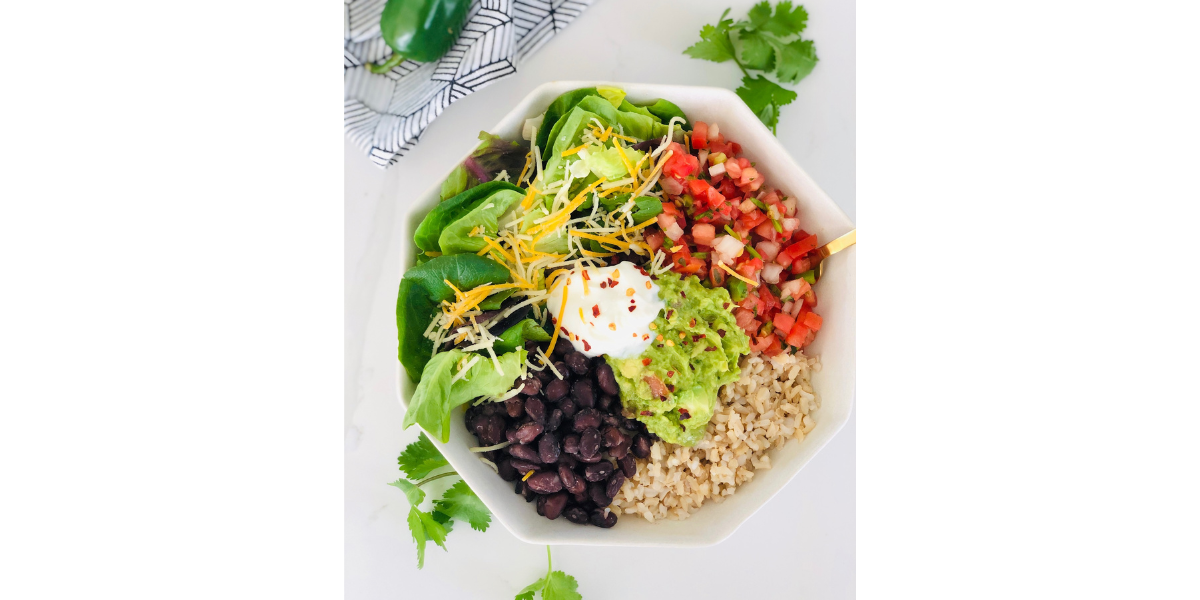Achieving Weight Loss and Fitness Goals
Written by Renee Korczak PhD, RDN, CSSD, LD
It’s the four-letter word that you might fear, but don’t have to. The term “diet” can be intimidating to some and can have a different meaning depending on what your diet consists of. As a registered dietitian nutritionist (RDN), I think about diet in terms of composition, in other words, all the foods and beverages that I consume daily, and the nutrients that are found within those foods and beverages. Diets can vary among individuals due to personal preferences, cultural/religious beliefs, and socioeconomic status, but some may wonder what is the relationship between diet and weight loss and how does this relate to physical fitness?
Let’s break it down, shall we?
The fundamentals of weight loss have not changed. You need to be in a caloric deficit and create a negative energy balance each day to support a healthy weight loss. Creating a negative energy balance can be achieved by combining exercise with the selection of nutrient-dense foods for your meals and snacks. To put this into perspective, you need to burn 3,500 calories more than you take in to lose one pound of weight. This translates into a reduction of 500 calories per day to lose one pound in a week.
Many different diets exist if you just do a simple google search. Some examples are “Keto, Whole 30, High-protein, low carb, etc.”. It is important to have a conversation with your healthcare provider before starting any diet, but I think the big takeaway is, that especially for Fad diets, that the effects for weight loss are variable from person to person and often there is just not enough scientific evidence to recommend a Fad diet to an individual. Remember, we all come in different shapes and sizes, and it is important that you don’t compare yourself to your friend, cousin, colleague, etc. Nutrition is personalized for this reason.
To lose weight and to help fuel your fitness, it is important to find a long-term dietary pattern that is sustainable for you and promotes overall health and your fitness routine. It's no fun to be under fueled when you’ve taken the time out of your day to be active, that is where nutrition plays a huge role.
tips from a registered dietitian to help you create sustainable, healthy dietary patterns and fuel your fitness goals:
Add more foods that are sources of fiber to your diet. If you haven’t heard already, fiber was recognized as an underconsumed nutrient of public health concern by the 2020-2025 Dietary Guidelines for Americans (1). This simply means that all Americans are not meeting the adequate intake recommendations for fiber. How much do you need each day? For adult women 19 yrs. + you require 25 grams of fiber daily. Ask yourself if you meet the mark for fiber each day and what food sources in your diet contribute to fiber. Most fresh fruits and vegetables, legumes, whole grains and even some functional beverages with added fiber are good contributors.
Balance your meals by including a source of high-quality protein to aid in satiety (the feeling of fullness after a meal) and to help with the maintenance of lean muscle and/or the accretion of lean body mass. We are lucky that protein is so abundant in the U.S. and can be found in both plant and animal sources. Aim for a protein source at each meal and snack that is considered high-quality, meaning that it provides ALL the essential amino acids that your body requires every single day (remember we don’t store protein in our body). Plant sources such as soy and quinoa are considered high-quality protein sources by the way 😊
Balance your snacks with a fibrous carbohydrate source + a protein source to get the best bang for your buck. For example, do you feel hungry after snacking on a handful of crackers? The answer is likely yes because all you’ve consumed are carbohydrates. Now try this swap: a handful of baby carrots (contains fiber and beta-carotene, a form of Vitamin A), along with 2Tbsp. of hummus or 2 ounces of cheese. The fiber + protein combination will make you feel much more satisfied until your next meal.
Don’t think of your eating habits as a dreadful diet, because more than likely this will unmotivate you from making nutrient-dense choices day to day. Honor your food and make small changes day to day that incorporate key nutrients your body requires to help fuel your fitness. Start small and set some small but realistic goals to help you achieve your peak.
More on fiber: If you are a food/fiber guru like me, you check out new or existing products to figure out which can fit into your lifestyle. Here are a couple of my top fiber food/beverage products currently on the market to help fill your fiber gap.
OLIPOP™ an amazing functional “better-for-you” cola that contains 9 grams of prebiotic fiber per can. https://drinkolipop.com/collections/drinks
FODY Peanut Butter Chocolate Quinoa Bars. If you have GI issues and are sensitive to certain ingredients, this one might be for you. https://www.fodyfoods.com/collections/snacks-1/products/low-fodmap-peanut-butter-chocolate-quinoa-bars
References:
U.S. Department of Agriculture and U.S. Department of Health and Human Services. Dietary Guidelines for Americans, 2020-2025. 9th Edition. December 2020. Available at DietaryGuidelines.gov. Accessed September 20, 2022.



